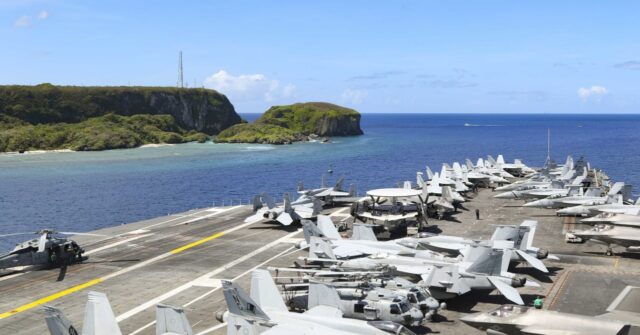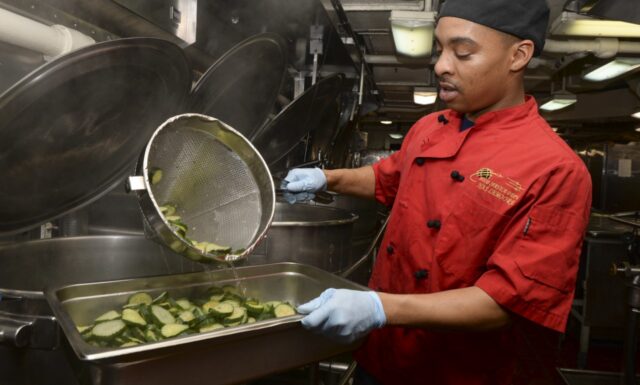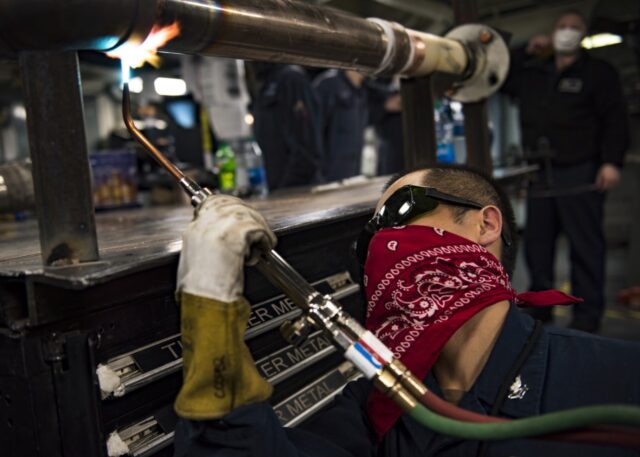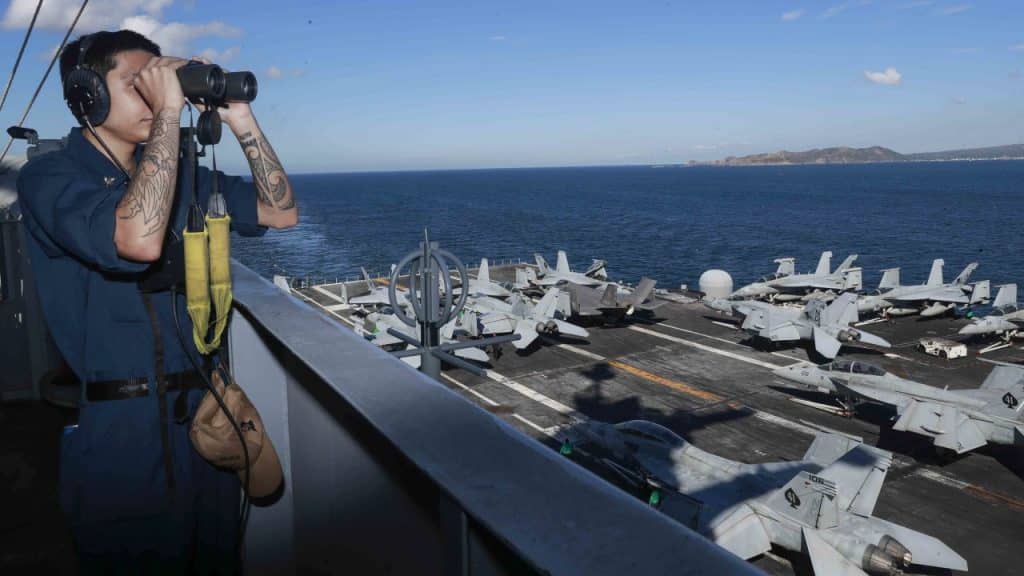September was extremely unlucky for the crews of American aircraft carriers. Drinking water was contaminated on board two of them – USS Nimitz (CVN 68) and USS Abraham Lincoln (CVN 72). On Nimitz, the water was contaminated with aviation fuel, and on Lincoln – with Escherichia coli (coliform bacteria). It is an embarrassing situation for the US Navy, as two similar situations on key ships took place in less than a week. In addition, in the case of Nimitz, the navy tried ineptly to cover up the matter.
On board Lincoln, the first signs of pollution were found on September 21, when the carrier was off the southern coast of California. The sailors noticed that the water was cloudy and smelled strange. The next day, E. Coli was found in three of the twenty-six drinking water tanks. What was the cause of the poisoning? According to Stars and Stripes, referring to an interview with US Navy representatives, contaminated water entered the drinking water system through a leak from the pipe.
Some of the pipes on Nimitz aircraft carriers pass through the interior of drinking water tanks, which also function as ballast tanks. Some of these pipes pump the bilge water that contains various precipitation, such as oil and chemicals that have accumulated in the lower parts of the ship, to a storage tank. Inside, it is stored until it is disposed of in a way that does not endanger the environment. The rupture of such a pipe led to contamination of drinking water tanks.
“Contaminated tanks were immediately isolated from the drinking water system and secured, and the odor and turbidity of the water subsided the next day,” said Lieutenant Commander Zach Harrell, spokesman for the US Navy Air Command.

Lincoln leaves the Guam Naval Port.
(US Navy / Mass Communication Specialist Seaman Apprentice Julia Brockman)
Harrell added that contaminated tanks will be thoroughly cleaned and additional tests will be carried out to further determine the cause of the incident, and that drinking water on board ships is tested for bacteria at least once a week. Since then, no similar incidents have been reported on other ships. Fortunately, none of the more than 3,000 seafarers on board CVN 72 were injured.
The situation was different with Nimitz. As a result of aviation fuel contamination, there were eleven confirmed cases of sickness among the crew. The incident forced the carrier to stop the Strike Group Integration Exercise (COMPTUEX) off the coast of California. According to information provided at the time by the spokesman of the 3rd Fleet, Lieutenant Commander Sean Robertson, upon returning to San Diego, the ship’s water distribution system was flushed through the municipal water supply with a million gallons (3.8 million liters) of water, after which the tanks were cleaned and inspected and drinking water was considered safe for the crew. After a two-week layover, Nimitz left North Island base to join the rest of the group and complete the certification.
Commander Harrell initially denied information about the injured Nimitz sailors. According to S&S at the time, according to reports by users of social networks, several members of the crew fell ill from drinking contaminated water or were burned after contact with it. It was not until September 30 that the US Navy admitted that five Nimitz sailors had health problems due to contact with contaminated water. Eventually that number rose to eleven. It was also reported that the fault was removed immediately, which, as we know now, was untrue.

Preparing a meal at the USS Nimitz.
(US Navy / Mass Communication Specialist 3rd Class Ian Kinkead)
What is the cause of water pollution on Nimitz? Even though more than a month has passed since the incident, according to the US Navy, the cause of the contamination has yet to be established. The investigation is ongoing, mainly due to the need to complete the certification of the strike team. According to Harrell, detailed analyzes to reveal the cause of the contamination are to be undertaken after the carrier returns to Kitsap-Bremerton home base next Friday, November 4. Only one of the twenty-six drinking water tanks on the aircraft carrier was contaminated officially. It has been turned off, as have the three adjacent tanks.
There are numerous speculations and unofficial information about the cause of the defect. One of the US Navy officers previously informed the USNI News portal that the incident was not related to a fuel system failure or leakage from fuel tanks, but to fuel being accidentally injected into the water distribution system. Bradley Martin, a retired US Navy officer, had a different opinion, telling Military.com that such incidents can and do happen from time to time in complex systems, especially on large and older vessels. Nimitz is the oldest remaining aircraft carrier of the US Navy, commissioned in 1975.

The sailor brazes a pipe for the drinking water distribution system on the USS Carl Vinson (CVN 70) Nimitz aircraft carrier.
(US Navy / Mass Communication Specialist 3rd Class Josiah J. Kunkle)
The procedures in force in the US Navy may also be a problem. As Harrell previously mentioned, the crew is required to regularly test the drinking water system for bacteria and disinfection residues, but it does not include testing the water for other contaminants such as aviation fuel. This could significantly delay the detection of fuel in the water.
An apparently trivial incident could have serious health consequences for a crew of thousands of aircraft carrier crews. After all, it is used not only for sanitary purposes, but also for consumption. The events may also have a negative impact on the morale of the crew, who set sail for months-long voyages ready for action in various regions of the world. The very situation that we could observe on social media around the incidents, and the evasion of the military, can certainly “scare off” some candidates who want to enter the service in the US Navy.
See also: The historic Vulcan fell out of the runway during taxi
US Navy / Mass Communication Specialist Seaman Kassandra Alanis

